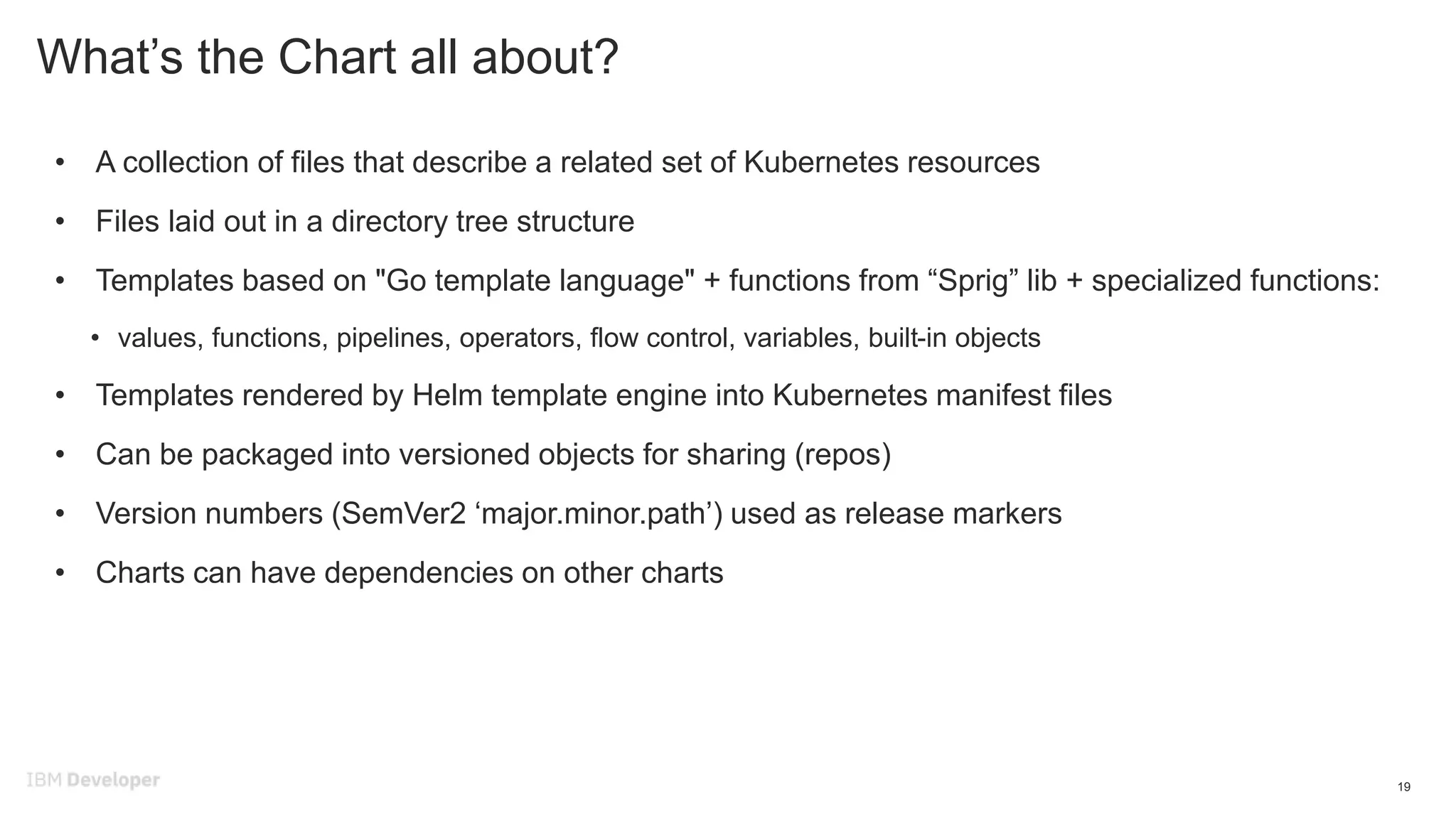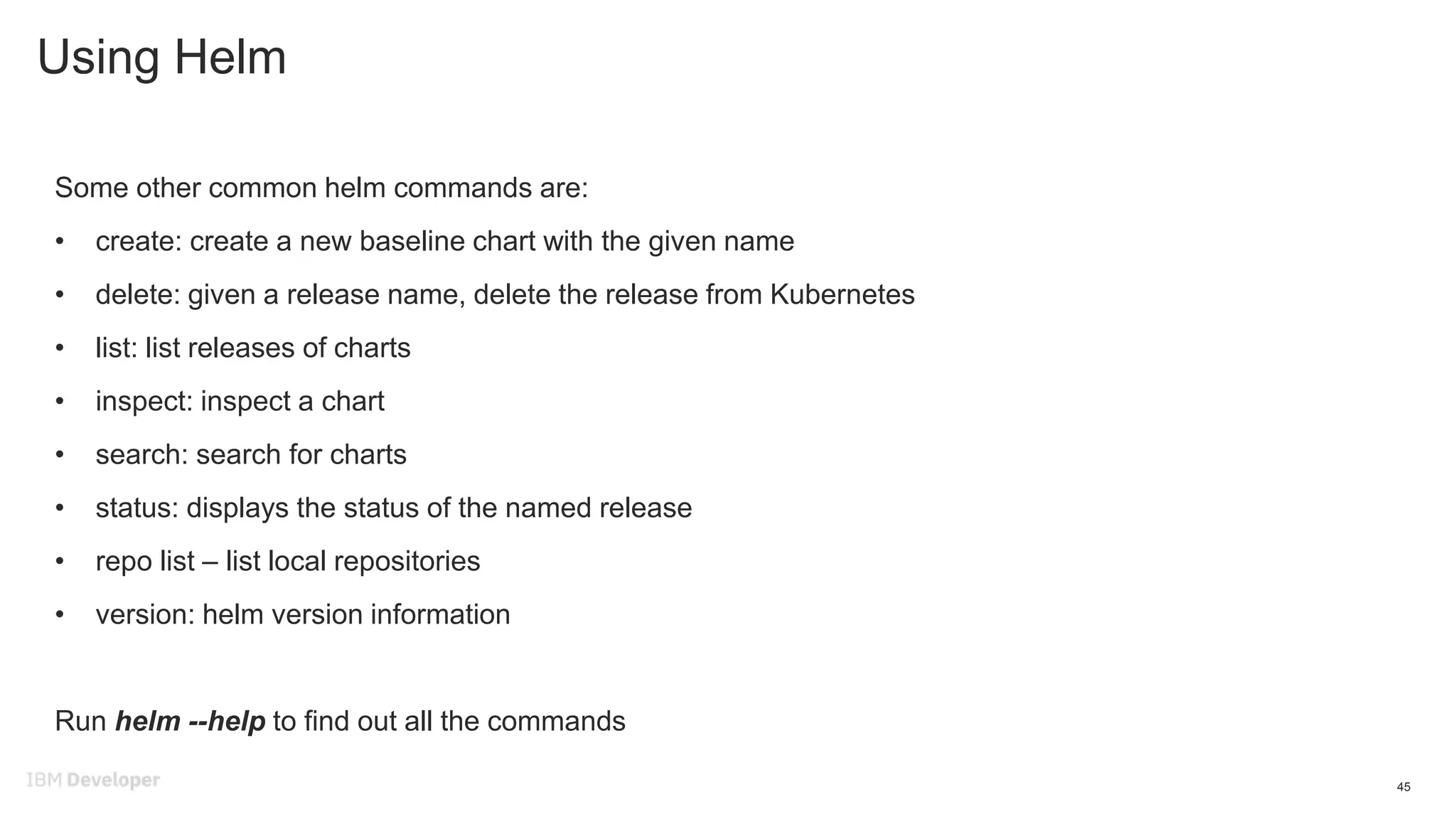Helm allows deploying and managing Kubernetes applications and their lifecycles. It provides the following key benefits over raw Kubernetes manifests:
1) It packages Kubernetes resources, dependencies, and variables together into reusable charts that can be deployed multiple times with different configurations.
2) It simplifies configuration management through templating, variables, and overrides. Charts can be deployed and upgraded seamlessly across different environments.
3) It provides release management capabilities for apps deployed via Helm, including tracking upgrades, rollbacks to previous releases, and viewing release history.



























![Helm Server Install
• Install Helm Server (Tiller)
• Tiller can be installed in one of two ways:
– In the Kubernetes cluster (recommended way)
– Running locally (in some dev scenarios)
• Install/Upgrade in the Kuberentes cluster:
– helm init [–upgrade]
– Command also initializes the CLI
• Run locally:
– tiller
– export HELM_HOST=localhost:44134 (for helm client. Alternatively, can pass –host when running
client command)
28](https://image.slidesharecdn.com/helm-230424225320-a7493cdf/75/Helm-pptx-28-2048.jpg)


















